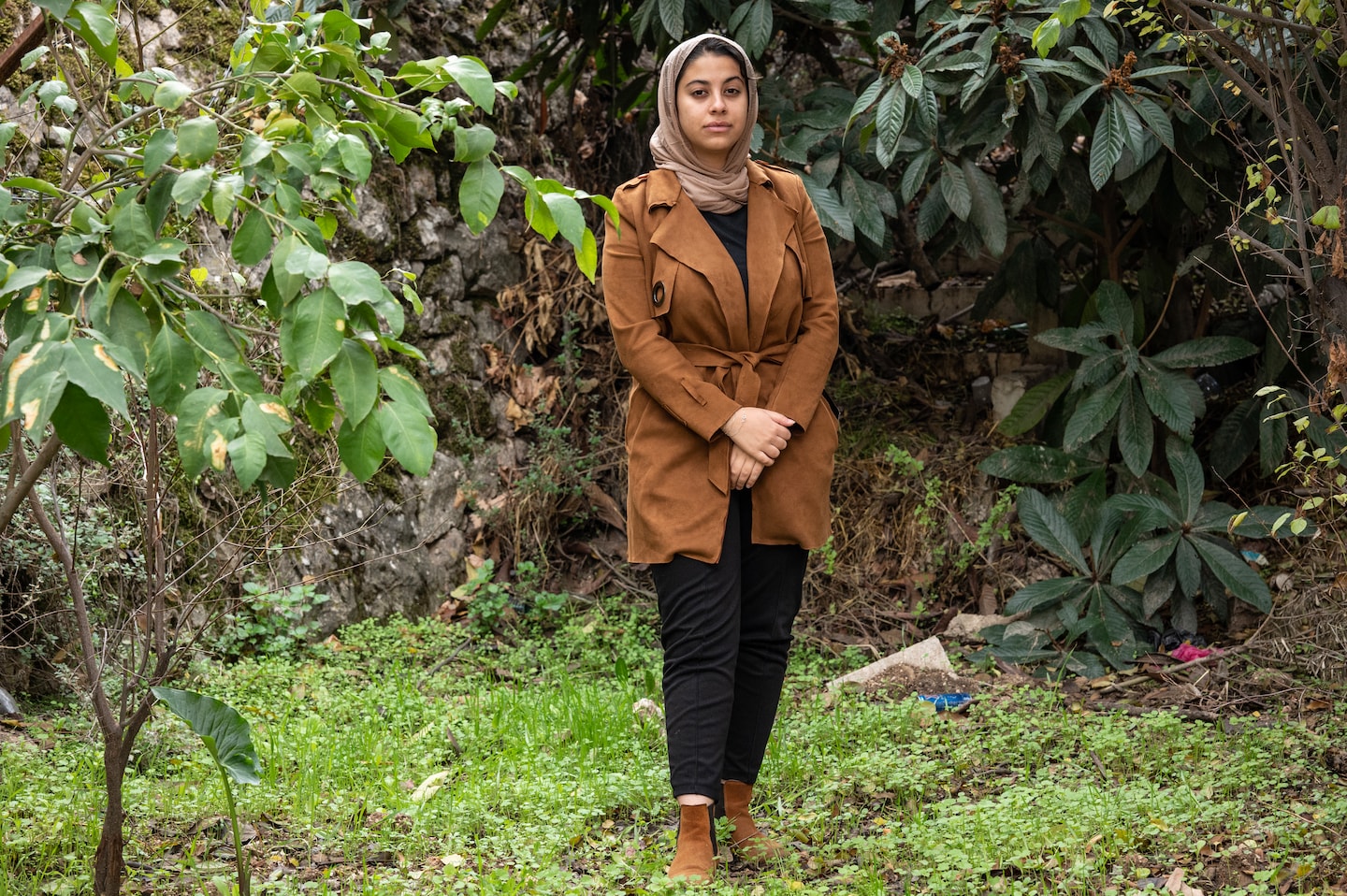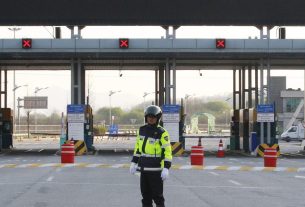Since Palestinian cars are banned from this neighborhood, an ambulance was out of the question. Instead, Alazza’s four sisters took her inside, applied ice and oils to the swelling wound and waited for the men to go away.
Alazza knows she will see them again — after all, they are her neighbors. They are also directly linked to members of Religious Zionism, the once-fringe, far-right political bloc that has championed asserting Israeli sovereignty in the West Bank and will be the second-largest force in the new Israeli government.
Even before Religious Zionism assumes office — taking on influential cabinet portfolios that will give them unprecedented control over this contested territory — their promises to set the stage for annexation are exacerbating the daily dangers and indignities of life in the occupied West Bank, residents say. Many warn that Hebron’s bloody, biblically tinged conflict, between its 800 hard-line Israeli settlers and its 200,000 Palestinians, is a test case for the future of relations between the two peoples under the next government.
Some of the faces in incoming Prime Minister Benjamin Netanyahu’s new administration are familiar to Hebron. Both Itamar Ben Gvir and Orit Strook are residents of the nearby hard-line settlement of Kiryat Arba and have harassed and assaulted Palestinians for decades.
“Netanyahu has given Ben Gvir the jurisdiction to do whatever he wants, and what he wants is us gone,” said Alazza this week, from the balcony where she was struck.
Israel’s most far-right and pro-settler government in its history is being sworn in during one of the deadliest years for both Israelis and Palestinians. Since last spring, a string of Palestinian attacks in Israeli cities and many military posts has been met with near-nightly Israeli military raids across the West Bank, leaving at least 150 Palestinians and 31 Israelis dead.
For activist Tal Sagi, however, the violence and deteriorating relations has had one positive side effect — Israelis are paying attention to the occupation again.
The former soldier with the anti-occupation group Breaking the Silence said that many Israelis are shocked by the images coming out of Hebron, where on the same day that Ben Gvir was appointed head of the expanded National Security Ministry, Israeli soldiers violently confronted left-wing Israeli activists.
Viral videos show a soldier pinning an activist to the ground and punching him repeatedly, and another, from the same unit, saying, “Ben Gvir will make order in this whole place. … You’re screwed. … You’re done making this place into your ‘whorehouse.’”
“There’s something good about Hebron being in the news,” said Sagi, who grew up in a West Bank settlement and later served in Hebron. “There’s so much normalization, so much silence that many Israelis — people I know — aren’t even aware that entire swaths of land and groups of people are under Israeli military control.”
Religious Zionism’s head, Bezalel Smotrich, will be granted oversight of the Defense Ministry, as well as access to billions of shekels as alternate leader of the Finance Ministry. He has vowed to enshrine in law the rights of residents in all settlements, especially to facilitate further building in the West Bank.
Smotrich and Ben Gvir were both suspected of being involved in terrorism in their youth, supporting attacks against Palestinians and Israeli politicians who sought to sign peace deals to end the conflict.
“I’m going to make sure that Israel takes responsibility for Judea and Samaria,” Smotrich told 103fm Radio on Monday, using the biblical name for the West Bank. He added that previous administrations have “choked” the growth of the half-million-strong population of settlers.
Harel Chorev, a researcher at Tel Aviv University’s Moshe Dayan Center for Middle Eastern and African Studies, said that though the Religious Zionism bloc represents a small minority of the Israeli electorate, with just 14 seats in the 120-member Knesset, its critical role in the next coalition will give it outsize power.
“They are a minority, but one that is determined and dogmatic, that thinks it is the pioneers of the new frontier,” he said. “They will be able to dictate the policy in a territorial struggle, in which they want to limit their opponents’ ability to expand.”
A former high-ranking official in COGAT, the Israeli military agency responsible for civil affairs in the occupied West Bank, who spoke on the condition of anonymity to speak about sensitive military issues, called Religious Zionism’s expected authority in the West Bank “a creeping annexation, taking away all options for a two-state solution.”
Smotrich and Ben Gvir, he said, “could bring about all kinds of explosions.”
Issa Amro, a Palestinian activist who gives tours to bring attention to the occupation, said those explosions were already happening in Hebron, which he said should be a cautionary tale for the rest of Israel.
“In the past two years, there’s been a gradual Hebron-ization of the rest of Israel,” he said on his first tour since being released from an intermittent week-long detention for filming the video of the soldier that went viral.
As he walked through the streets with his group, Amro was confronted by a young settler who harangued him. When Amro just walked away, the man shouted repeatedly, “Where are you running away to, Issa?”
“For years, we have known about the oppression and the brutality, but now there’s also the fascism in the next government, and that makes it harder for everyone to close their eyes,” Amro said, struggling to make himself heard over the settler’s shouting.
The tour then turned a corner onto Shuhada Street, once the bustling heart of the old city that is now a ghost town of shuttered buildings. At one end is the Bab al-Zawiyah checkpoint, where since the right-wing election victory, the wait for Palestinians coming back into the city from work or errands has stretched up to six hours.
A remote-control machine gun that can be loaded with stun grenades, sponge-tipped bullets and other anti-riot tools was attached to the upper level of the gate in September. For weeks, Palestinians who passed underneath it had thought it was just a camera.
Suddenly a police officer backed by two armored vehicles pulled up around Amro and his group and informed him he’d been detained. The angry settler from earlier had called them in claiming that Amro was violating a restraining order supposedly barring him from the city.
“We don’t want you making trouble, any provocations,” said the Israeli officer, his hand shaking as he handed back the group’s IDs after recording the numbers, and letting the tour resume.
“Is it a provocation for me to discuss my own rights?” asked Amro repeatedly. The officer ignored him.
Fatima AbdulKarim in Hebron contributed to this report.




